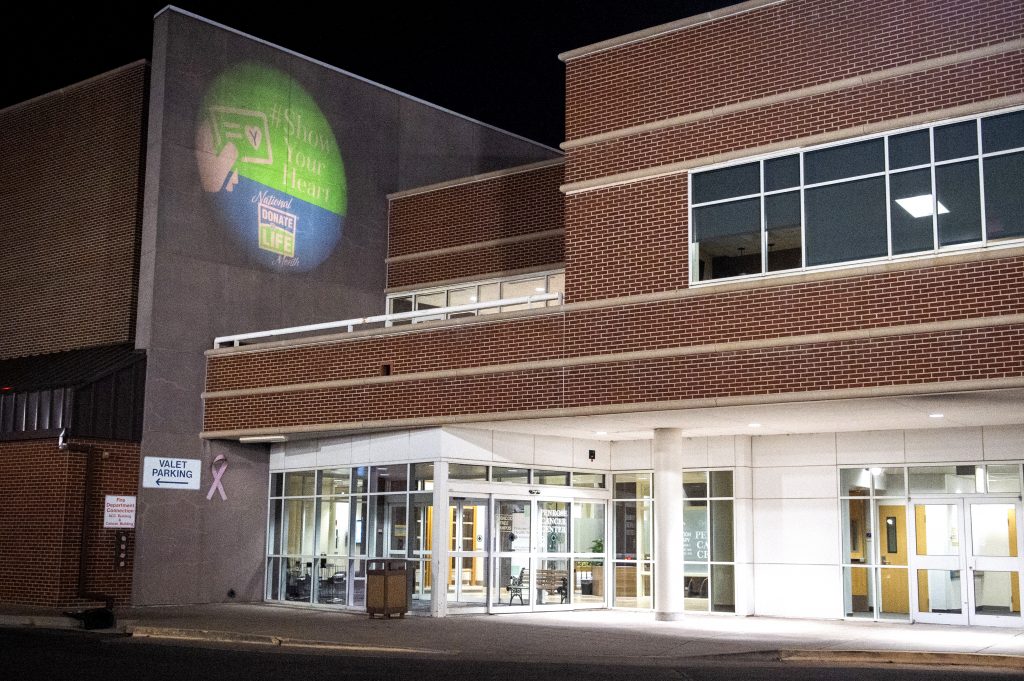Partners

Hospital Partners
Donor Alliance partners with hospitals to support families through end-of-life care, honor the donation decision of individuals in our area and facilitate the gift of life. In short, our partnership saves and heals lives. Donor families often share that donation was the one bright spot in a very difficult time. It is our honor to work with you to care for the families we jointly serve.
The Donation Process
From new learners to experienced partners, the Professional Partners section is designed to inspire donation advocacy and advance the professional skills as we walked alongside families through the donation process.
Referral
Hospital Physician Declares Death
Donor Designation/Donor Registry
Family Discussion
Donor Management
Recovery
Patient meets clinical triggers and a referral is made to Donor Alliance:
Referral is made electronically through the EPIC EMR system if your hospital supports electronic referral or called into the Donor Information Line 1-800-448-4644 or 303-321-0060.
Call Donor Alliance within one hour if you can answer YES to any of the following questions:
- GCS 5 or less?
- Did my patient lose any TWO brain stem reflexes?
- Discussion of brain death testing?
- Discussion to remove life sustaining therapies, including pressor support, ECMO?
- Has the family mentioned donation?
Download the clinical Trigger card
Expect a call in approximately 20 minutes. The Donor Alliance staff will conduct a chart review prior to the call and will contact you for additional information. If you need a call back immediately please indicate that on the referral.
- When Brain Death is Declared (if circulatory death is declared, see below)
Brain death is the irreversible cessation of all brain activity, including the brain and brainstem. The brain dies from lack of blood/oxygenation. Most organ donation occurs after brain death declaration. A hospital physician, in accordance with accepted medical standards and following the hospital policy, must make the diagnosis of brain death. - The time of brain death determination is the legal time of death. The physician who declares brain death cannot be the physician who recovers the donated organs.
Link here to our Brain Death Guideline
If Donation after Circulatory Death is Declared
Circulatory death is the irreversible cessation of all circulatory and respiratory function. Circulation and oxygenation stops. Patients who die of circulatory death can donate tissue and eyes and, in some cases, organs.
In order for Donation after Circulatory Death (DCD) to occur, the following circumstances must exist:
- Permanent and irreversible neurological injury (i.e. upper spinal cord injury)
- Permanent and irreversible disease (i.e. end-stage musculoskeletal or pulmonary disease)
- Life-sustaining medical treatment/ventilator support necessary
- Planned withdrawal of life-sustaining medical treatment/ventilator support
In these situations, organ recovery occurs only after support is withdrawn and after circulatory death is pronounced.
a. Donor Alliance will check to see if the patient has registered themselves to be an organ, eye or tissue donor. We may also search to a advanced director that documents the patient’s decision to be a donor or not to be a donor. A Document of Gift, otherwise known as donor designation, establishes the intent of the person making the gift and serves as legal authorization for donation. This designation may be made in an advanced directive, living will, driver’s license or online registry. The donor registry is first person authorization for organ, eye and tissue donation and no other form of authorization is required.
b. Although authorization from the next-of-kin is not required, the Donor Alliance coordinator will provide information to the next-of-kin about the donation process and offer the same level of support and follow-up care that would be offered to any donor family.
Link to Colorado UAGA
Link to Wyoming UAGA
Educational Flyer DCD vs BD
One Sheet Donation Info
Supporting the family through the donation process takes all of us. Donor Alliance staff, trained in family conversations, will guide the family through the donation process and handle any discussions around donation opportunities.
If a family mentions donation, acknowledge the donation questions, but connect the family with the Donor Alliance staff member in-person or over the phone. Please do not mention donation to the family and contact Donor Alliance right away if the family has questions.
Link here to bridging statement
Your support for the family is so critical throughout the discussions and process. If possible, please partner closely with the Donor Alliance team to best support the grieving family.
The goal of clinical donor management is to optimize and maintain organ function. Donor management begins when brain death has been declared and authorization or donor designation for organ donation has been obtained. In patients who have been determined to be suitable candidates for donation after circulatory death (DCD). A Donor Alliance Coordinator will work closely in collaboration with the hospital care team to optimize organ function and maintain the opportunity for organ donation.
Donor Management Goals:
Goals include:
Arterial and central lines are recommended for accurate and efficient monitoring of vital signs and fluid status throughout the organ donation process and OR. Also, to provide reliable access for medication administration and provide the patient and family comfort as frequent serum labs are assessed for ongoing organ viability. Diagnostic testing may be requested to further assess organ function. Examples of these are echocardiograms, bronchoscopy, hearth catheterization, CT scan etc.
Care of the Deceased Patient to Preserve Donation Opportunity – Eye & Tissue Donors
You play a critical role in preserving donation opportunities when your patient is going to be a tissue or tissue and eye donor. Cooling the patient is the most important thing you can do. The American Association of Tissue Bank standards along with FDA regulations mandate that if tissue recovery cannot take place within 15 hours of death, the body must be cooled. If your hospital has a cooled morgue, we recommend you move the patient there as soon as possible and preferably within 12 hours of the time of death. It’s also important to note the time that the patient arrived in the morgue so that our donation specialists can accurately document this.
If your hospital does not have a cooled morgue, we suggest that you place ice on the patient to adequately cool them until the recovery team arrives. The donation specialist will work closely with you over the telephone to explain how to complete this procedure.
If the patient must be moved to another facility, funeral home or coroner’s office please communicate those changes with your coordinator.
Tear production stops at the time of death, so it doesn’t take long for the cornea to dry out. To preserve the possibility of eye donation, the following eye care regimen should be performed as soon as possible. A saline rinse prior to giving the family time with their loved one is recommended to keep some moisture in the eye. When appropriate rinse both eyes with sterile saline or balanced salt solution. Close both eyelids and cover eyes with a compress (2x2 or 4x4 gauze) soaked in saline. Finally, elevate the head using a pillow or head block.
a. Recovery will take place either at the hospital or the patient will be transferred to the Donor Alliance Recovery Center. Transfer of patients to the Donor Alliance Recovery Center can only take place on patients declared brain dead and who are stable for transfer. Donor Alliance will work closely with the hospital to coordinate either scenario.

Upcoming Training
Donor Alliance’s hospital development team offers a variety of educational opportunities for medical professionals, including clinically-focused workshops offering CEPTCs. Information on upcoming workshops is below. To request custom training or one-on-one visit please contact your liaison through the contact us page here.